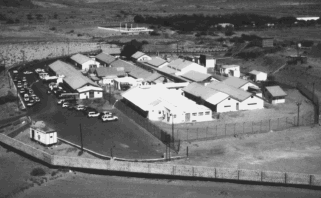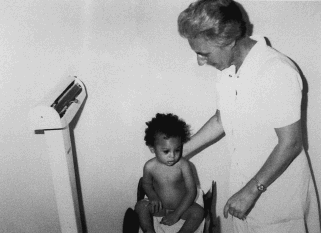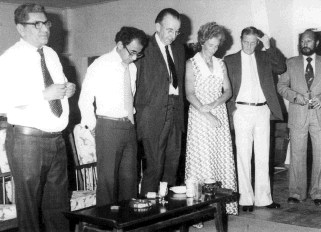Dr Adel al-Aulaqi was born in Crater, Aden, and after completing his secondary education at Aden College, studied medicine at Edinburgh University. He served in the Aden Refinery Medical Division 1978–82. He later joined the staff of Wexham Park Hospital, Slough, and, following his retirement in 2005, continues to work part-time there. He was recently awarded an MA from SOAS, London, for his study of the South Arabian Medical Service. The following article is based on his presentation to the Society at the Middle East Association on 15 May.
Introduction
Construction of the Aden Refinery by BP (British Petroleum) brought economic prosperity and social change to South Arabia for nearly a quarter of a century. In the mid-1970s the company diversified away from its traditional dependence on oil and divested itself of the aging refinery and in May 1977 the PDRY Government purchased the facility and appointed Faisal bin Shamlan as its first ED (Executive Director). In charting out its future the Refinery’s Arab management saw opportunities and challenges, especially in the health care area.
Replacing its expatriate staff and modernising the hospital were major concerns for the Medical Division. 1 In other sections of the Refinery, Yemenis had shadowed BP expatriates and were ready to step into place but, at the handover, there were no similarly available BP-trained or recruited Arab physicians.
Based on the author’s files and recollections, limited access to BP Archives atWarwick University and on the memories of many, this account looks briefly at the history of the Medical Division, throws light on managing change over the five year period 1978–82 and summarises the outcome.
A private medical service
By developing the Little Aden site between 1952–54, BP created the most significant private health care system in South Arabia. It was based on a temporary 70–130 bed hospital to cater for the men constructing the Refinery. On becoming operational in July 1954, its hospital was refurbished and re-branded a ‘semi-permanent’ structure of 130 available beds. By caring for all BP expatriate employees, their dependants and, initially, the ‘Adeni’ refinery employees only, it became an integral part of the newly-created industry and society; it received ‘permanent status’ in 1957, and functioned like a larger cottage hospital.
| |
|
 |
Aden Refinery
Hospital in 2008. Courtesy: The ARC Photographic Unit
|
The same building of centrally air-conditioned, pre-fabricated and interconnected huts, survived and was handed over in May 1977 to ARC (Aden Refinery Company). A tribute to its robustness and good maintenance, fifty four years on, it continues to function in its original structural framework (see photo).
From 1957 to 1977, it gradually extended its services to an increasing Arab population. Shortly before the handover it cared for some 2000 BP employees and their dependants. 2 The vast majority of the 250 or so expatriates were British nationals. In the same period the total entitled-totreatment population rose from about 5, 000 to 14, 000, looked after by about fifteen BP-recruited permanent or locum expatriate staff (Fig. 1). Sporadic cases of non-entitled patients received emergency care only.
Dr John C. Dilley, an Occupational Health physician, was the last BP SMO (Senior Medical Officer) in-charge. All medical staff wore more than one functional hat. The highly respected physician Dr Peter Molesworth, was also committed to paediatrics, and served as anaesthetist. Two general practitioners, Dr Ian Rumfitt, administered anaesthetics and Dr Abdul-
Fattah al-Tarabulsi additionally managed obstetric and gynaecological cases. Like his predecessors, Mr Bruce McCulley, was general and orthopaedic surgeon. Mr DavidWiles, dentist, was highly thought of for his expertise. Expatriate nurses included matron, Miss Williams, sisters in charge of various sections of the hospital, and the pharmacist, Miss Briggs, supervised pharmacy and the medical stores.
Handover: opportunities and challenges
The Refinery’s transfer to the Marxist/socialist state engendered greater health care demands by its employees. To plan a smooth handover and realistically meet new targets required careful consideration of opportunities and challenges facing the Medical Division.
The close proximity of the hospital to its community and its excellent reputation were distinct advantages to be safeguarded and enhanced, not least because a readily available replacement service was not feasible. GH (Gumhouria Hospital, previously Queen Elizabeth Hospital), the nearest potential substitute, was some twenty miles away. Chronic lack of reliable transportation risked life in an emergency, and routine attendance by Refinery employees could have engendered unacceptable loss of working hours. Already a truly overstretched centre, the GH could well do without the burden of 20, 000 more people. It was vital to retain the Refinery’s independent health care service to maintain healthy employees and a robust industry.
Employees and management also demanded further expansion of the service. This involved modernising the emergency room, creating a dedicated midwifery service and specialised Obstetrics and Gynaecology and neonatology units. New specialist services for Orthopaedics, Eye Diseases, ENT (Ear Nose and Throat) disorders and Day Surgery were to be established. The Dental department was to expand in its basic work, orthodontics and training of Arabs, and the medical library required upgrading with current published material. Most, if not all, structural and infra-structural parts of the hospital needed further maintenance, upgrading or refurbishing. To meet the anticipated increase in specialised surgical procedures the Operating Theatre needed to be re-equipped. A new versatile X-Ray machine was also essential as was modernising the radiology department with staff training and possibly appointing a Radiologist. An enhanced medical laboratory service required creating a histology section and expanding its transfusion, microbiology and routine laboratory work. An ARC office in London was needed to maintain essential purchases and recruitments.
A re-defined service
Five factors dictated the redefining of the Medical Division. Firstly, the demand to expand and modernise needed appropriately qualified medical professionals. Secondly, in the 1970s paucity made it almost impossible to appoint Yemeni doctors, nurses and technicians, and recruitment abroad was inescapable. To avoid costly disruptions of an unfamiliar new system, it was essential to continue the established effective British medical practice. It, therefore, made good sense to employ doctors and nurses from the UK and India. Fourthly, it was imperative to retain the hospital’s few valuable Yemeni nursing and technical staff. This required them to receive higher training and refresher courses abroad and be promoted to senior posts, making it necessary to appoint locum staff. Finally, the ultimate goal of the service was toYemenise all posts with the suitable qualified staff.
In the autumn of 1978 the reality of remaining an independent private service, the concept of recruitment abroad and the detailed re-structuring plans received approval by ARC Management and that of the relevant Ministries of Health, Labour and Finance, as well as strong support from Ali Nasser Mohammad, the then Prime Minister and later President of PDRY. The handover schedule was agreed with senior BP management. The new structure of the Medical Division is shown in Fig 2. A new Hospital Secretary post and an expanded role for the Matron relieved the SMO/SIC (Surgeon-in-Charge) of some direct management responsibilities.
Recruitment began in mid-1979; in the UK specialist doctors, matron, senior nursing and pharmacy staff were recruited, whilst in India some 50 nurses, a specialist anaesthetist and a doctor with Obstetrics and Gynaecology experience were appointed. A Hungarian dentist (George Nemeth) and technician were recruited by the Hungarian Government, contracted to and salaried by ARC.
Given adequate time meaningful handover of all responsibilities between BP and new ARC staff occurred. Mr Zohoorul-Islam Khan established the new Eyes Unit. The new team members also wore more than one hat, worked an on-call rota for general duties and the generalists covered for the respective specialists as the need demanded. Mr Daman Singh, Orthopaedic specialist, and the author interchanged surgical cover. Dr Ibrahim Manthy generated adult specialist cardiac and diabetic clinics. His expertise in medicine and paediatrics was pivotal for managing sick neonates born in the new Obstetrics and Gynaecology unit under Sister Anne McDonald and specialist Haris Jayasundere.
| |
|
 |
Matron Kathy McDermott, OBE, who modernised the ARC's nursing service.
|
The hospital now treated all but rare cases that needed treatment abroad. Fears of a drop in standards proved unfounded, and closer collaboration with GH resulted in referral to ARC hospital of a few problematic cases.
Approaches toYemenisation
In 1979–80 a number of UK-qualified doctors were approached, none was yet ready to join. In 1985 Mr Abdallah Salem Omayer joined the Refinery service to later replace Mr Abdalla Abdul Wali Nasher. The latter succeeded the author in late 1982, as SMO and SIC. Refinery scholarships were granted to Dr Mohammad Abdul-Mageed al-Qubati and Mr Mohammad Ba-Sahai to specialise respectively in Surgery and higher medical laboratory technology in UK. Dr Nazeeh Bin Shamlan, an Obstetrician and Gynaecologist, was appointed sometime in 1982 to replace the expatriate specialist. Promising students from Aden Medical School were encouraged to spend time in the Refinery Hospital; Dr Ashwaq Mater joined and specialised in Paediatrics.
To retain existing Yemeni staff, particularly in nursing and technology, a number were sent for further training overseas to shoulder greater responsibilities. Initially Farooq Murshed for the medical laboratory and Ahmed Muflihi for radiology spearheaded the higher training programme in U. K. Matron Kathy McDermott’s persistent efforts were rewarded by the UK’s Royal College of Nursing permitting the Refinery nurses to benefit from refresher courses; Sister Perin Abdul-Karim took over from Kathy McDermott as Matron. Until fullYemenisation materialised a decade later, the Refinery hospital depended on a gradually decreasing number of expatriate doctors and nurses.
Outcomes 1978–82
The transfer of responsibilities between BP and ARC staff went uneventfully as scheduled and in many aspects the Medical Division changed considerably in the five years. It retained the principles of high standard of care and coherent cross-cover in clinical medicine; but modernised further and introduced a broader health care remit.
Firstly, Miss McDermott modernised the nursing service and Mr alQadhi restructured and updated the personnel and patient records sections, hospital maintenance, catering and the new ambulance services. All the essential planned expansion in specialist services was implemented. A new ARC office in London replaced the contracted services of other agencies and facilitated hospital recruitment and supplies.
Secondly, the first few steps to Yemenising the posts were taken. Yemeni nurses took more senior posts in the wards, out-patient and in-patient clinics. The author aside, the first local Arab to be appointed was gynaecologist Nazeeh bin Shamlan.
Thirdly, the entitled population reached 20, 000, all cared for gratis, and expansion in preventive medicine by mass immunisation and Mother and Child Health care was implemented. Additionally, 20 difficult or needy, non-entitled, cases per month were legitimised for a one-off free treatment. Free emergency treatment for seriously ill or injured patients in the area, irrespective of entitlement, also continued.
| |
|
 |
From left to right: Faisal bin Shamlan (making a speech of farewell to Dr
Molesworth on the latter's departure from Aden in 1979 after 24 years of
service), Dr Adel al-Aulaqi, Dr and Mrs Peter Molesworth, Ron Wiseman and
Muhammad Abdullah Hatem.
|
But, aspirations to employ a radiologist, an occupational health physician and a full-time ENT surgeon remained unfulfilled in 1982. Their responsibilities were taken up by members of the new team. The London histopathology service at Guys Hospital was also retained. For good reasons, between 1978 and 1982, dependence on expertise from the UK and India was a fact.
In summary, the Medical Division re-defined itself, modernised, expanded existing disciplines, added new specialties, continued to provide high standard clinical care and commenced Yemenisation. A District General Hospital, outside MOH direct control, emerged.
Notes
1. The Medical Division is the Health Care Service Unit of the Refinery and its associated bunkering employees. It comprised the hospital and clinics within the hospital and one in each outlying area of Bureika and Tawahi.
2. Wife/husband, children and father and mother.
